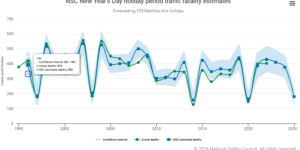Stryker Corp. agreed to pay more than $1 billion to resolve lawsuits over thousands of hip implants recalled in 2012 after patients complained of pain, swelling and metal debris from the devices.
Stryker will pay a base amount of $300,000 per case to patients who had the devices surgically removed, Kim Catullo, one of the company’s lawyers, told a New Jersey judge yesterday. The device maker faces more than 4,000 suits consolidated in New Jersey state court and federal court in Minnesota.
Stryker withdrew its Rejuvenate and ABG II devices in July 2012 after warning surgeons they could harm tissue around the hip and cause other health problems. The company said yesterday that it set aside more than $1.4 billion to cover costs of handling cases over the recalled hips so the settlement fell into the “low end of the range of probable loss.”
Unlike other device makers, Stryker settled before facing a trial over claims their hips suffered from design flaws and the company failed to warn patients about the devices’ risks.
“It’s odd that they would not try any cases and then settle so early in the litigation process,” said Carl Tobias, who teaches product-liability law at the University of Richmond in Virginia. “Sounds like they might have been afraid of facing even bigger liability if they didn’t settle them now.”
J&J Settlement
Last year, Johnson & Johnson, the world’s biggest seller of health-care products, agreed to pay at least $2.5 billion to settle litigation over its ASR metal-on-metal hip device. J&J is in talks about a $250 million settlement that would extend compensation to an additional 1,000 ASR hip recipients, people familiar with the negotiations said last week.
There are at least 1,800 cases Stryker consolidated before U.S. District Judge Donovan Frank in St. Paul, Minnesota. In those suits, some hip recipients blamed the Stryker implants for high levels of metal debris found in their blood.
“We estimate that it will cover about 3,000 patients whose devices have already failed,” Ellen Relkin, a lawyer for the plaintiffs in the New Jersey case, said in an interview.
To qualify for the settlement, Stryker patients must show they had their hip implant removed prior to Nov. 3, according to a website outlining the terms. A majority of the payments will be made by the end of 2015.
‘Fair, Timely’
“This settlement program provides patients compensation in a fair, timely and efficient manner,” Bill Huffnagle, a spokesman for Kalamazoo, Michigan-based Stryker, said in an e- mailed statement.
Patients who suffered extraordinary injuries tied to the hip’s removal, such as multiple surgeries, may qualify for more than $300,000 in compensation, Ralph Campillo, a lawyer for Stryker in the federal cases, said in an interview. Patients must meet guidelines to get such enhanced awards, he added.
Lawyers for Stryker hip recipients worked hard to settle the cases given that many plaintiffs were elderly, said Pete Flowers, lead plaintiffs’ counsel in the federal case.
The settlement, which resulted from months of mediation, was announced simultaneously yesterday before Frank in St. Paul and Judge Brian Martinotti in Hackensack, New Jersey. Retired federal magistrate judge Diane Welsh helped mediate the settlement.
Stryker, which reported more than $9 billion in 2013 revenue, touted its artificial hips as lasting for years, but some failed within two years of being implanted, according to court filings.
Stryker fell as much as 0.9 percent yesterday in trading in New York. Shares rose 0.9 percent today.
The New Jersey case is In Re Stryker Rejuvenate and ABG II Modular Hip Implant Litigation, 296 BER-L-936-13, Bergen County Superior Court (Hackensack). The federal case is In Re Stryker Rejuvenate Hip Implant Products Liability Litigation, 13- mdl-2441, U.S. District Court, District of Minnesota (St. Paul).
(An earlier version of this story was corrected to reflect a payment deadline.)
–With assistance from Michelle Fay Cortez in Minneapolis and Beth Hawkins in federal court in St. Paul, Minnesota.





















 Carrier Management’s 2024 Top Features (Reader’s Picks Unlocked)
Carrier Management’s 2024 Top Features (Reader’s Picks Unlocked)  Four P/C Insurers Are ‘AI Titans’; AI Impact Leaders Revealed: Research
Four P/C Insurers Are ‘AI Titans’; AI Impact Leaders Revealed: Research  Most Distracting Holiday Songs for Drivers Ranked
Most Distracting Holiday Songs for Drivers Ranked  Property and Casualty Insurance Trends for 2025
Property and Casualty Insurance Trends for 2025 









